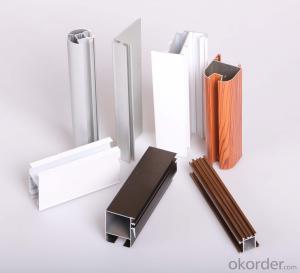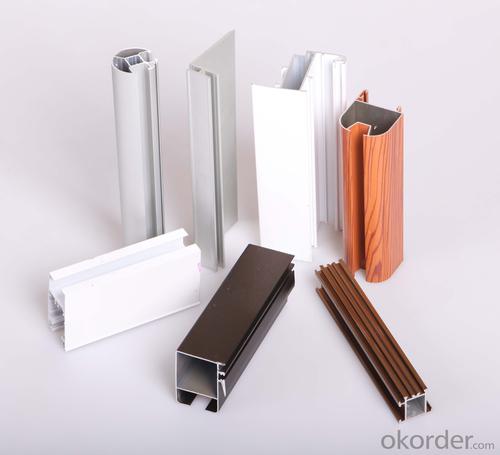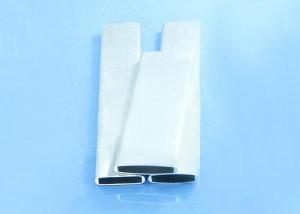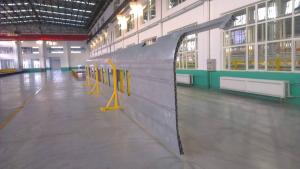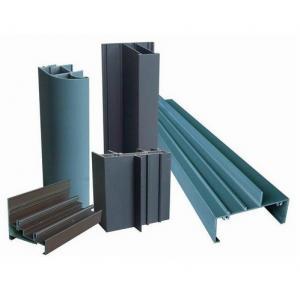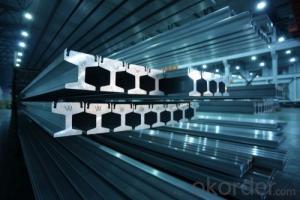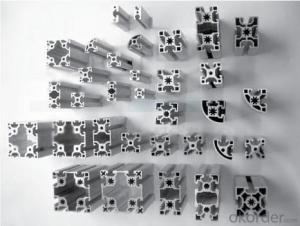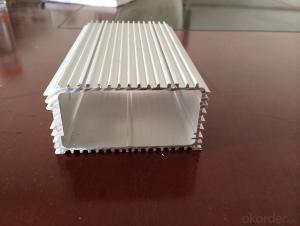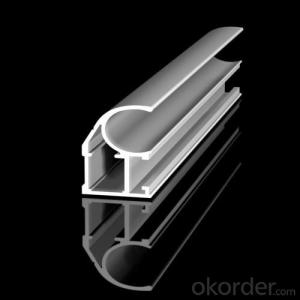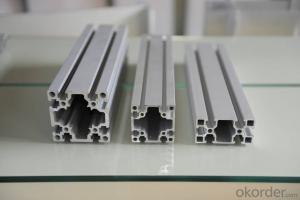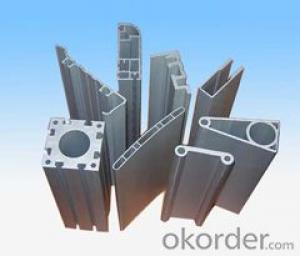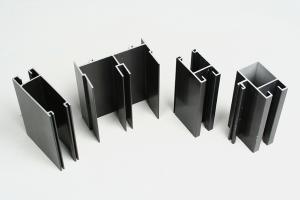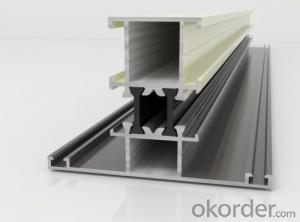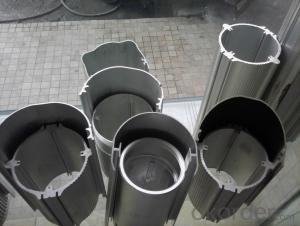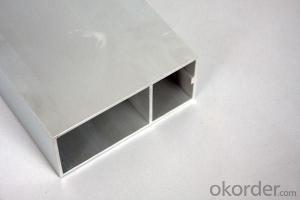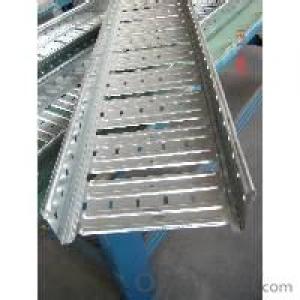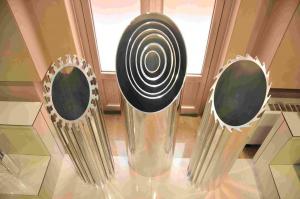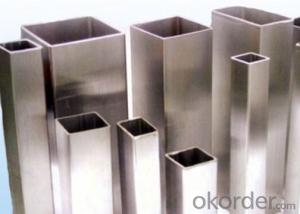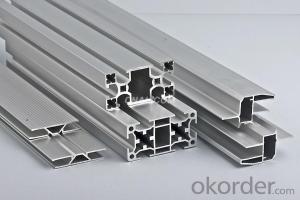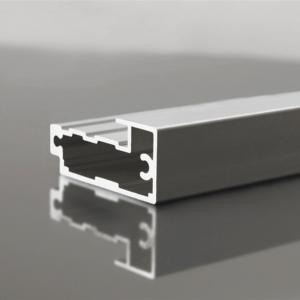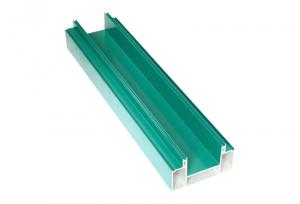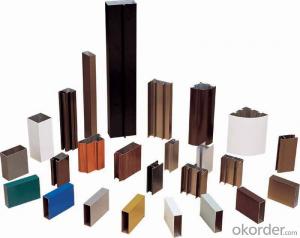Aluminum Extruded Profiles for Windows and Doors Frame - Aluminum Alloy Profile Extrusion Wholesale
- Loading Port:
- Shanghai
- Payment Terms:
- TT OR LC
- Min Order Qty:
- 5 m.t.
- Supply Capability:
- 10000 m.t./month
OKorder Service Pledge
OKorder Financial Service
You Might Also Like
Specification
1. Specification of Aluminum Alloy Profile Extrusion for Windows and Doors Frame
Alloy | AA1050,AA1060, AA1070, AA1100 |
Temper: | H12, H14, H16, H18, H22, H24, H26, H32,HO, F |
Thickness: | 0.10-500mm |
Width: | 10mm- 2200mm |
Standard: | GB/T3880-2006, ASTM, ISO, EU standard |
Special Specification is available on customer’s requirement | |
2. Application of Aluminum Alloy Profile Extrusion for Windows and Doors Frame
wall cladding, ceilings, bathrooms, kitchens and balconies, shutters, doors,windows…
3. Feature of Aluminum Alloy Profile Extrusion for Windows and Doors Frame
Surface Quality :
Be free from Oil Stain, Dent, Inclusion, Scratches, Stain, Oxide Decoration, Breaks, Corrosion, Roll Marks, Dirt Streaks and other defect which will interfere with use,
Mochenical Property:
Chemical Composite and Mechanical Property
4. Certificate:
SGS and ROHS(if client request, paid by client), MTC(plant provided), Certificate of Origin(FORM A, FORM E, CO), Bureau Veritas and SGS (if client request, paid by client), CIQS certificate
5. Image of Aluminum Alloy Profile Extrusion for Windows and Doors Frame
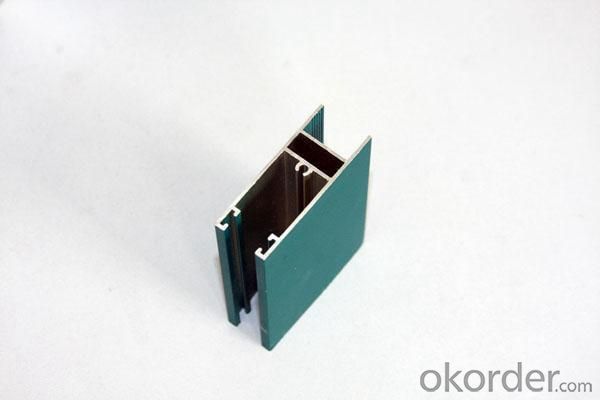
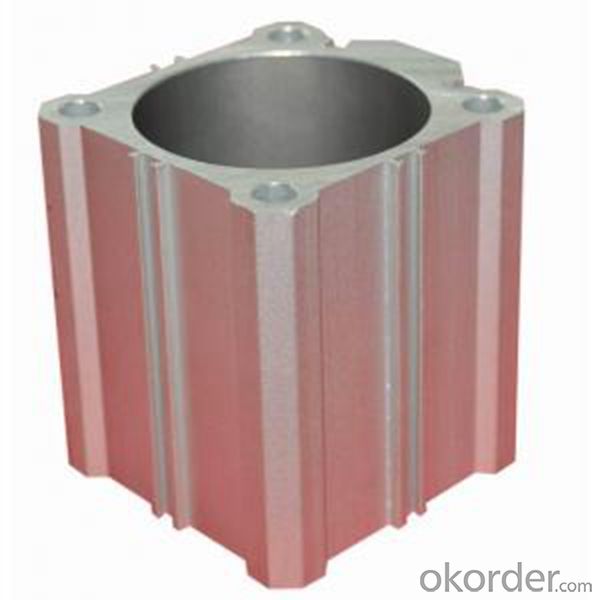
6. Package and shipping of Aluminum Alloy Profile Extrusion for Windows and Doors Frame
First, plastic cloth with drying agent inside; Second, Pearl Wool; Third, wooden cases with dry agent, fumigation wooden pallets, aluminum surface could cover blue PVC film
7. FAQ
Question 1: What is your MOQ?
We accept one ton per type for an order. But the detail we could negotiate.
Question 2: What is your normal terms of payment?
We always trade with you by T/T. But we also accept the L/C as you require.
Question 3: How many kinds of the surface treatment we can choose?
You could choose different color of powder coated. Anodized of black. matte silver, nature, champagne, bronze color. Mill finished. Wooden finished and printed.etc.
Question 4: Can you supply OEM services?
We offer OEM services for 17 years.
Question 5: How many days for opening the mould?
Normally about 10 days.According to the difficulty of your drawing.
Question 6: Can i choose the package what i want?
Yes, of course. We offer various kinds of package.e.g.PE foam. Shrink film. Wrapping paper.
But we would give you professional suggestion of package.
- Q: What are the different surface protection options available for aluminum profiles?
- There are several surface protection options available for aluminum profiles, including anodizing, powder coating, painting, and laminate coating. Anodizing is a process that creates a durable and corrosion-resistant layer on the surface of the aluminum. Powder coating involves applying a dry powder to the surface, which is then heated to form a protective layer. Painting involves applying liquid paint to the surface, providing both protection and aesthetic appeal. Laminate coating involves applying a thin layer of protective material, such as plastic or wood, to the surface of the aluminum. Each option offers different benefits and is suitable for various applications.
- Q: Can someone give me a direction? Thank you
- Look where you are and where you are. There are various directions for development, such as bags and so on, bathroom..
- Q: Aluminum blackening formula
- Anodic oxidation of aluminum is aluminum or Aluminum Alloy anode to lead as cathode in sulfuric acid, oxalic acid, chromic acid and aqueous solution electrolysis, so that the surface oxide film. The anodic oxidation process is most widely used. Aluminum and Aluminum Alloy sulfuric acid anodizing oxidation film has high adsorption capacity, easy sealing alone or with colored more to improve the corrosion resistance of anodic oxide film thickness and appearance. The process is generally Aluminum Alloy sulfuric acid anodizing electrolyte has the advantages of simple operation, stable, cost is not high, the process is mature, but in sulfuric acid anodized process often unavoidable failure occurred, influence of oxide film quality. The following detailed analysis about the failure reasons, then give some preventive measures for your reference:Common faults and analysisAluminum Alloy products by sulfuric acid anodic oxidation, partial oxidation without touch, showing visible black spots or stripes, film drums or holes. The failure phenomenon of tumor is rare but has occurred.Dr. al website has detailed knowledge
- Q: What type of aluminum alloy profile is used for high-rise balcony?
- Aluminum alloy doors and windows in the material, materials, there are 6 main areas, you can refer to:1, thickness: aluminum alloy sliding door has 70 series, 90 series of two, residential interior aluminum sliding door with 70 series can be. Series numbers indicate the mm mm of the thickness of the door frame. The aluminium alloy sliding window has 55 series, 60 series, 70 series, 90 series four kinds. According to the window size and selected a series of local wind pressure value set. The aluminium alloy sliding window used as a closed balcony shall be no less than 70 series.2, chromaticity: the same aluminum alloy profile color should be consistent, such as color difference is obvious, that is not appropriate to buy.3, strength: tensile strength should reach 157 mm per square meter Newton, the yield strength to reach 108 Newton per square millimeter. When buying, you can use your hand to bend the profile properly. After you let go, you should be able to return to the original condition.4, flatness: check the aluminum alloy profile surface should be no dent or drum out.5, oxidation: oxide film thickness should reach 10 microns. When you buy it, you can light it on the surface of the section to see if the oxide film on it can be wiped off.6, gloss: aluminum alloy doors and windows, to avoid the surface has open bubbles (white dots) and ash (black spots), as well as cracks, burrs, peeling and other obvious defects profiles.
- Q: Can aluminum profiles be used for industrial workbenches?
- Yes, aluminum profiles can be used for industrial workbenches. Aluminum is a lightweight and durable material that is commonly used in industrial applications. It offers excellent strength-to-weight ratio, corrosion resistance, and can be easily customized to suit specific needs. Additionally, aluminum profiles can be easily assembled and disassembled, allowing for flexibility and easy modifications to the workbench layout.
- Q: How can the aluminum profile T6 and T5 be distinguished?
- Hardness is generally measured by a Brinell hardness tester. T5 is subjected to high temperature molding and air cooling quenching in the shortest possible time. The T6 is treated with solid solution after artificial aging. So there is a difference between the two. But from the appearance of it is difficult to judge, experienced hands can be used to swing aluminum, roughly judged
- Q: This question asks for methods to avoid corrosion on aluminum profiles during the installation process.
- <p>To prevent corrosion on aluminum profiles during installation, follow these steps: Use high-quality aluminum that has a protective oxide layer. Ensure the installation environment is dry and clean. Avoid contact with corrosive substances like acids or alkalis. Apply a protective coating or sealant if the profiles will be exposed to harsh environments. Use stainless steel or corrosion-resistant fasteners. Regularly inspect and clean the profiles to remove any dirt or debris that could lead to corrosion. Proper installation techniques and maintenance can significantly reduce the risk of corrosion on aluminum profiles.</p>
- Q: Are aluminum profiles recyclable at the end of their useful life?
- <p>Yes, aluminum profiles can be recycled at the end of their lifespan. Aluminum is one of the most recycled materials in the world due to its durability and the energy efficiency of recycling it. The recycling process involves melting the aluminum, which requires significantly less energy than producing aluminum from raw materials. This makes recycling aluminum profiles not only environmentally friendly but also economically viable. The recycled aluminum can be used to produce new aluminum products, contributing to a circular economy.</p>
- Q: How do aluminum profiles perform in terms of vibration resistance?
- Aluminum profiles are known to have excellent vibration resistance properties. The inherent characteristics of aluminum, such as its lightweight nature and high strength-to-weight ratio, contribute to its ability to dampen vibrations effectively. Aluminum profiles can absorb and dissipate energy generated by vibrations, reducing the risk of structural damage and ensuring the integrity of the overall system. Furthermore, aluminum profiles can be designed with various geometries and cross-sectional shapes, allowing for enhanced stiffness and rigidity. This improved structural stability helps in minimizing the transmission of vibrations throughout the profile, resulting in reduced resonance and vibration amplification. In addition to these inherent properties, aluminum profiles can be further enhanced through various methods, such as extrusion processes and surface treatments. Extrusion processes can shape the aluminum profiles to specific configurations, optimizing their vibration resistance capabilities. Surface treatments, such as anodizing or powder coating, can provide an additional layer of protection against corrosion and wear, further enhancing the longevity and performance of the profiles. Overall, aluminum profiles excel in terms of vibration resistance due to their lightweight nature, high strength-to-weight ratio, and the ability to be customized for specific applications. These qualities make them an ideal choice for a wide range of industries, including automotive, aerospace, and construction, where vibration control is crucial for maintaining product performance and safety.
- Q: What are the noise insulation properties of aluminum profiles?
- Compared to other commonly used soundproofing materials like wood or PVC, aluminum profiles demonstrate relatively poor noise insulation properties. Due to its lightweight and thin nature, aluminum allows sound waves to effortlessly penetrate it. Consequently, it fails to offer a substantial obstacle for sound blocking or absorption, resulting in minimal noise reduction. Nevertheless, the noise insulation capabilities of certain aluminum profiles can be enhanced through the inclusion of insulating materials or the utilization of thicker profiles. While these adjustments can somewhat improve the soundproofing performance, they may still not match the effectiveness of materials specifically designed for noise insulation.
Send your message to us
Aluminum Extruded Profiles for Windows and Doors Frame - Aluminum Alloy Profile Extrusion Wholesale
- Loading Port:
- Shanghai
- Payment Terms:
- TT OR LC
- Min Order Qty:
- 5 m.t.
- Supply Capability:
- 10000 m.t./month
OKorder Service Pledge
OKorder Financial Service
Similar products
Hot products
Hot Searches
Related keywords
